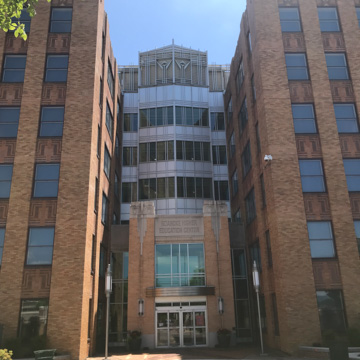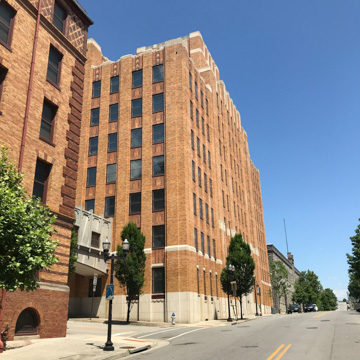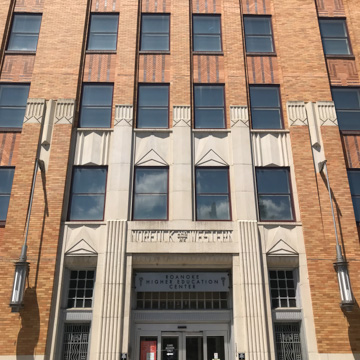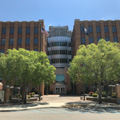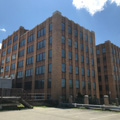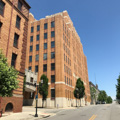You are here
Roanoke Higher Education Center (Norfolk and Western General Offices, North Building)
Influenced by Shreve and Lamb's R. J. Reynolds Office Building (1927–1929) in Winston-Salem, North Carolina, this sophisticated Art Deco building went up in the first years of the Great Depression. Its gleaming brick walls, in earth tones brighter than those of the South Building, have a soaring verticality that contrasts with the earthbound horizontality of the South Building. The vertical divisions of the North Building are marked by masonry pilasters separating the three main sections of the building's facade and narrower strips delineating the individual bays. The stepped roofline of the central division rises twice and is crowned by a set-back penthouse. Here, as on the South Building, the brickwork is elaborate. The motifs, however, are Art Deco favorites: chevrons, Greek keys, reeding, and long-stemmed volutes. Art Deco's fresh forms, motifs, and use of such relatively new materials as aluminum for the window frames and grilles and cast-concrete decorative panels mark a lively contrast to Roanoke's tall buildings of the early twentieth century. The railroad's former offices were renovated in 2000 by Spectrum Design to accommodate classrooms and study spaces for more than a dozen colleges and several worker-training organizations.
Writing Credits
If SAH Archipedia has been useful to you, please consider supporting it.
SAH Archipedia tells the story of the United States through its buildings, landscapes, and cities. This freely available resource empowers the public with authoritative knowledge that deepens their understanding and appreciation of the built environment. But the Society of Architectural Historians, which created SAH Archipedia with University of Virginia Press, needs your support to maintain the high-caliber research, writing, photography, cartography, editing, design, and programming that make SAH Archipedia a trusted online resource available to all who value the history of place, heritage tourism, and learning.












